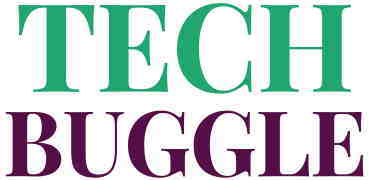Building smarter cities is an essential step toward a sustainable, efficient, and innovative future. Urban planners and administrators face the complex task of integrating various technologies and data sources to enhance city living. One critical technology that is making a significant impact in this field is the annotation tool. This tool helps in the meticulous task of labeling vast amounts of urban data, from geographic information system (GIS) layers to real-time traffic feeds, thereby supporting sophisticated urban planning and management strategies.
Understanding the Role of an Annotation Tool in Urban Planning
At its core, an annotation tool is used to add informational labels to digital data, which can include text, images, and video. In the context of urban planning, such tools are indispensable for processing geographical data sets, marking out utilities, planning routes, and managing zones. These annotations help convert raw data into insightful, actionable information, thereby aiding decision-making processes.
For instance, in GIS applications, an annotation tool enables planners to label various features on maps, such as roads, residential areas, commercial zones, and public parks. These labels are not merely descriptive but can include interactive elements that provide further details like width of a road, type of trees in a park, or regulations specific to a zone. This layer of data enrichment enhances the planners’ ability to design spaces that cater to the needs of the populace.
Facilitating Better Decision Making
With enriched data at their disposal, city planners can make more informed decisions that foresee future needs. For example, by annotating traffic data, planners can predict congestion patterns and plan alternate routes or additional infrastructure. This proactive approach not only improves traffic management but also reduces pollution levels and saves time for commuters.
Furthermore, urban annotations can help in disaster management. Detailed, up-to-date labels regarding building materials, road quality, and emergency service locations make it easier to plan evacuations and deliver faster aid during disasters. This illustrates how an annotation tool doesn’t just support daily management but also enhances a city’s resilience against emergencies.
Improving Public Engagement and Services
Annotation tools also play a crucial role in public engagement. By using these tools to mark utilities and public services on interactive online maps, city administrations can provide residents with valuable information about resource locations (like water or gas lines), public transport networks, and civic amenities such as libraries, hospitals, and schools.
This transparency not only builds trust between the city officials and the public but also enables residents to contribute to the planning process. For example, residents can suggest where new bike lanes should go if current routes are marked clearly on the map. This community feedback is vital for developing cities that truly reflect the needs of their inhabitants.
Streamlining Maintenance and Upgrades
Maintaining a city is just as crucial as planning its future developments. Annotation tools assist in the upkeep of urban infrastructure by marking areas that need attention, which helps in prioritizing maintenance works. Annotated data can signal when a road needs resurfacing, a building requires inspection, or a public space needs cleaning. This systematic approach to maintenance ensures that the city operates smoothly and efficiently, which in turn enhances quality of life.
Enhancing Integration Across Systems
Perhaps one of the most compelling uses of an annotation tool in urban planning is its ability to integrate various data systems. For instance, combining annotated data from public transport systems, traffic cameras, and pedestrian counts can provide a holistic view of city dynamics, which is invaluable for long-term urban sustainability projects.
Conclusion
In conclusion, the adoption of an annotation tool in urban planning and management processes reflects a move towards more dynamic, informed, and responsive city management. By efficiently labeling and utilizing data, cities can not only enhance their operational efficiencies but also improve the quality of life for their residents. The smart cities of tomorrow require smart planning tools today, and annotation tools are at the forefront of this urban revolution. This technological aid is not just about adding layers of information; it is about weaving these layers into the fabric of urban life, creating cities that are not only functional but also adaptive and inclusive.

